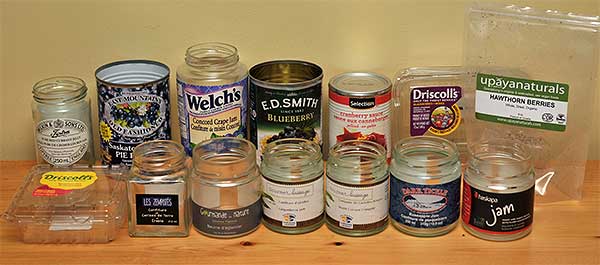| Blackberries grow in BC, Ontario, Quebec and the Maritimes; commercial growing is limited to the north shore of Lake Erie.
| | 
|
| Blueberries are not just the highest-value fruit crop in Canada, we grow more of them than any other country. 43% of our lowbush blueberries come from Quebec, 89% of highbush from BC.
| | 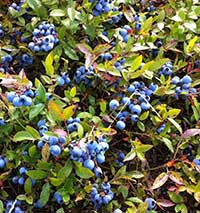
|
| Clammy ground cherry (Physalis heterophylla) is related to tomato, native to southern Ontario & Quebec and is the only edible ground cherry. Only the ripe fruit is edible, the rest of the plant contains solanin and should not be eaten.
| | 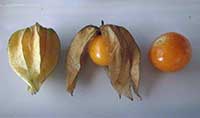
|
| Cloudberries are a Newfoundland specialty, called bakeapples there; they are circumpolar above 55° latitude.
| | 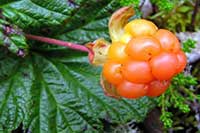
|
| Cranberries grow in wetlands across Canada, they withstand severe winters only if the roots are flooded. They are harvested commercially by flooding the bog then skimming off the floating berries.
| | 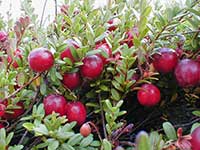
|
| Elderberries are native to eastern North America, a similar species grows over much of Europe. They are mostly seeds, so are cooked then strained to make a syrup.
| | 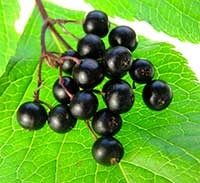
|
| Gooseberries are found across Canada in cool wet areas. Our indigenous people singed the spines off them with hot coals.
| | 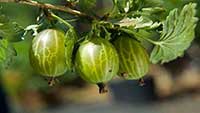
|
| Grapes are native across Canada. Commercial grapes and wines come from an introduced Mediterranean species, but the Concord selection of our native grape is our favourite for jams and jellies.
| | 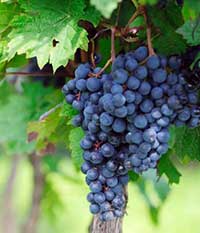
|
| Haskap is the Ainu name for Lonicera caerulea, a circumpolar species native to northern boreal forests in Asia, Europe, and Canada. It's found in all provinces except BC. Those who promote it as an exotic with miracle health benefits call it haskap; US growers call it honeyberry.
| | 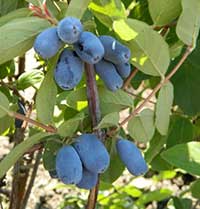
|
| Hawthorns grow across Canada but are more common in the east. Our indigenous people used them for food and a variety of medical uses. It's best not to eat the seeds as they can be toxic, and the berries don't taste all that great either.
| | 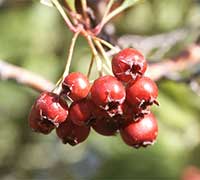
|
| Lingonberries are collected wild in Newfoundland where they are called partridgeberries; they grow all around the Arctic circle.
| | 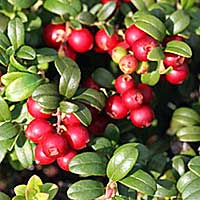
|
| Raspberries grow across Canada. They were often dried for winter nutrition by our indigenous people.
| | 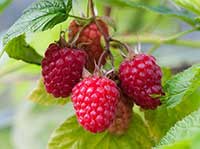
|
| Red currants (Rubus triste) grow sparsely across Canada. They were used on the prairies to make pemmican and for medical purposes. Cultivated red currants are a European species.
| | 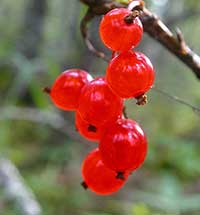
|
| Rose hips are found in the fall across Canada. Our indigenous peoples dried them to provide Vitamin C throughout the winter. After brewing for tea, the cooked berries that remained were used in stews or eaten as a vegetable.
| | 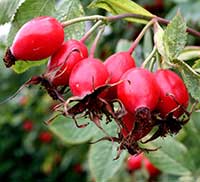
|
| Serviceberries grow across Canada, but are a prairie specialty where they are called Saskatoons. They were often used for pemmican by the plains Cree.
| | 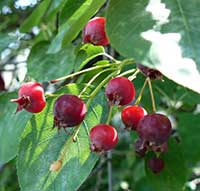
|
| Skunk currant is named after the smell of the ripe fruit, not the taste! It grows throughout Canada and is used as food and for medical purposes by the Cree.
| | 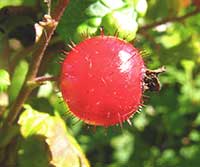
|
| Strawberries grow all over the northern hemisphere and have been a human food since the dawn of history. Cree people use all parts of the plant for medical and religious purposes.
Cultivated strawberries are hybrids of three common wild species.
| | 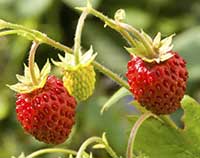
|
